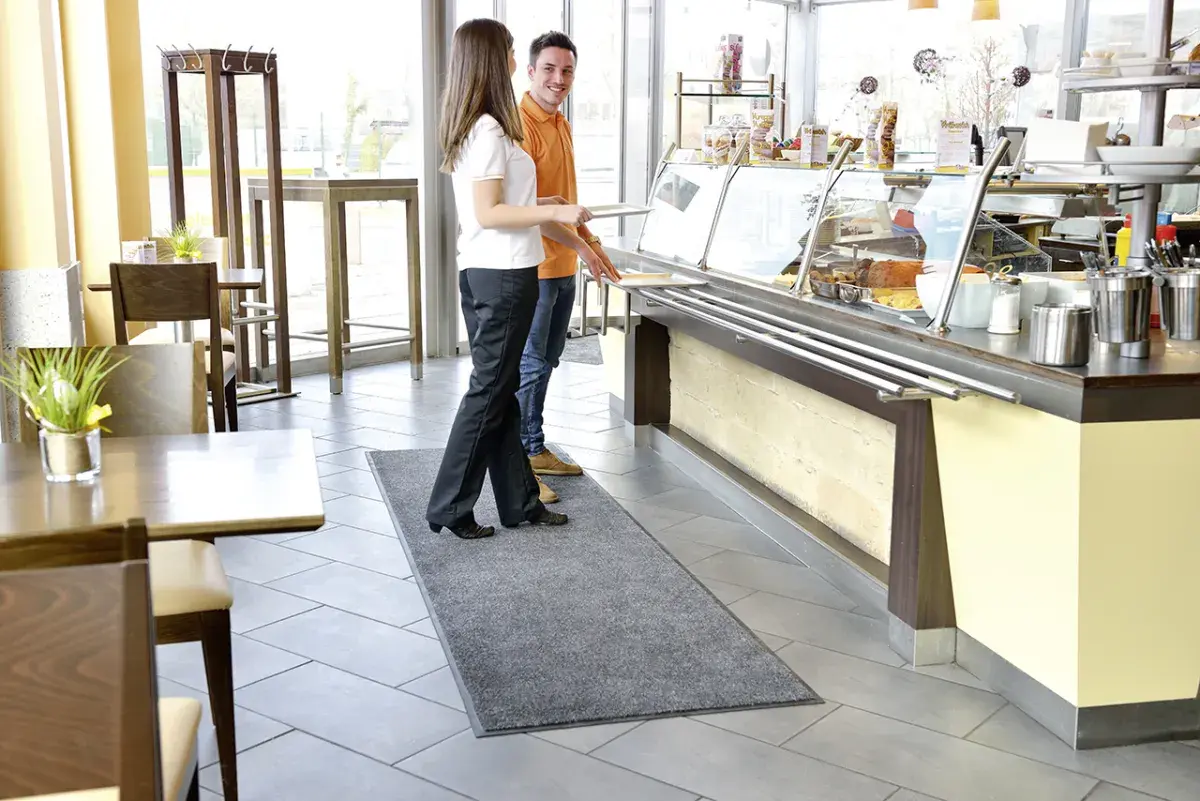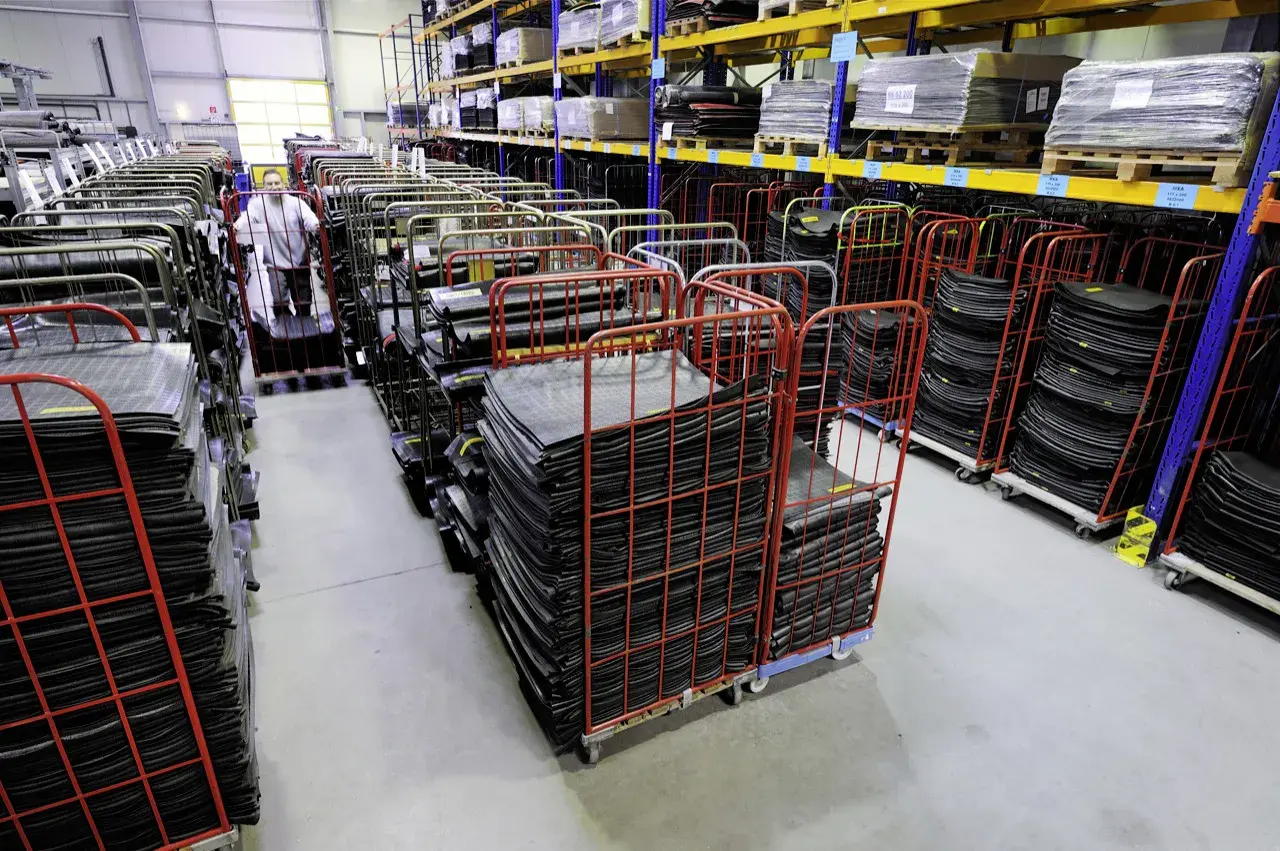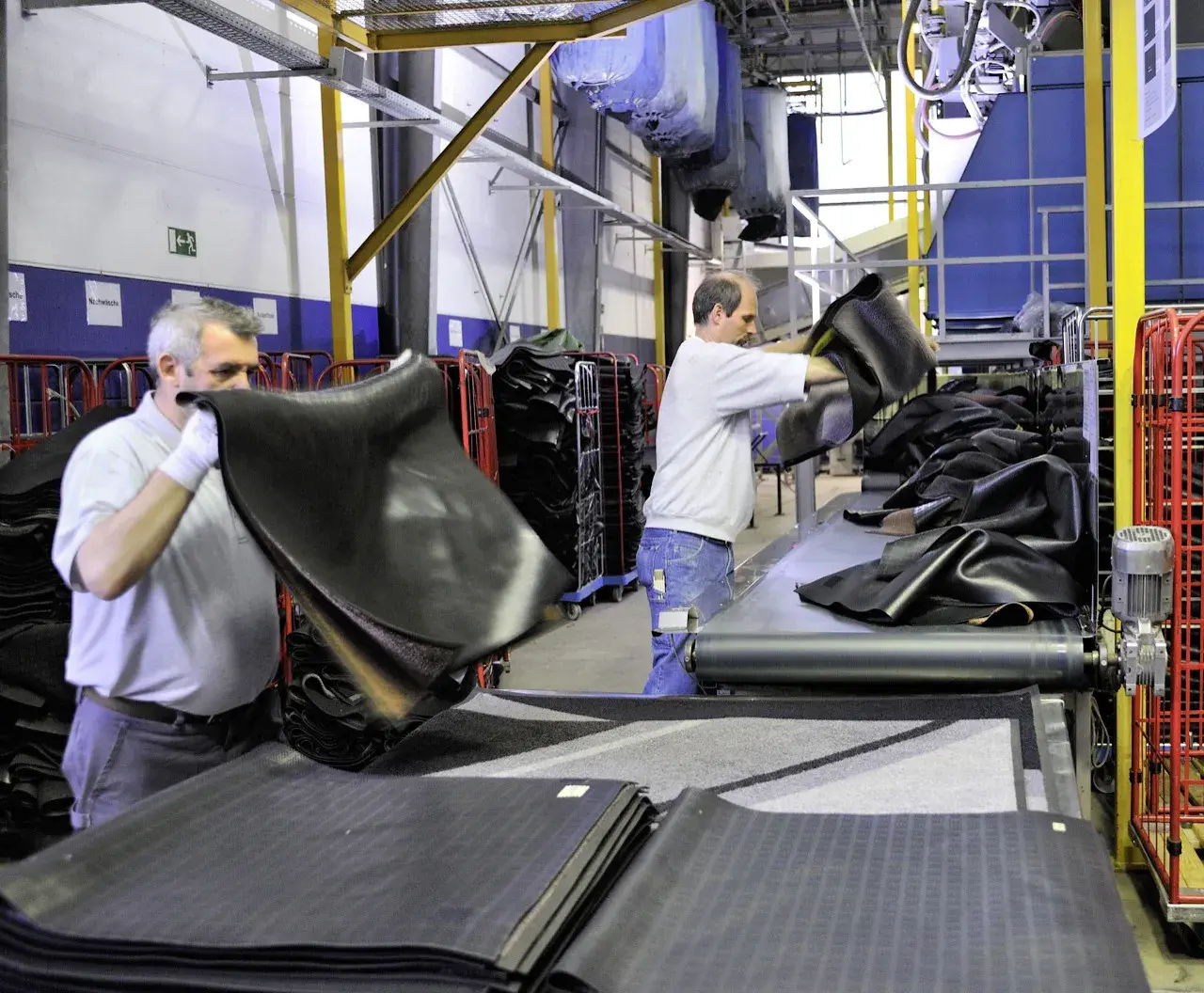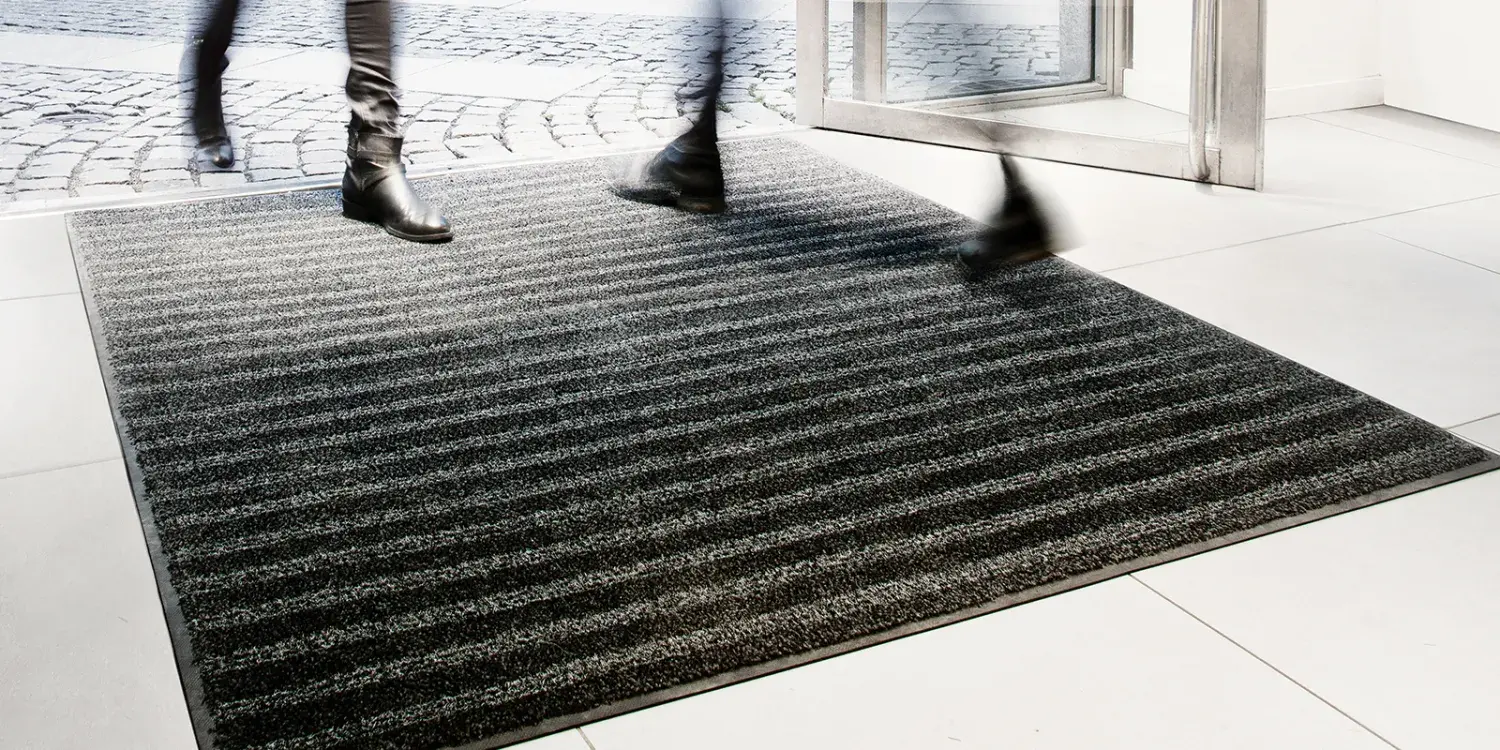With a capacity for up to 4.5 litres of dirt and water per square metre, dust control mats are true marvels of absorption – but even they have to be relieved of dirt from time to time. Read on to find out more about the resource-friendly and hygienic cleaning of mats.
Dust control mats: the handy cleaning aids in entrance areas
Dust control mats made of special high-twist nylon fibres can absorb up to 4.5 litres of dirt and water per square metre. As such, they contribute to both improved cleanliness and greater safety. After all, wet shoe soles and leaves increase the risk of slipping significantly. Dust control mats work by brushing off the soles of shoes and absorbing any dry and wet dirt. And this is no mean feat: up to 3.5 kg of dirt is carried into shops, restaurants and hotels each day per 500 customers and guests.

Since the majority of this dirt is absorbed by the dust control mats, retailers, companies, nurseries and many other institutions benefit from up to 70% lower cleaning costs*. With a customised design, e.g., in the company colours or bearing the corporate logo, the dust control mats make the perfect visiting card to welcome your guests.
To ensure a permanently good first impression, the dust control mats should be cleaned regularly – this service is handled routinely by CWS-boco for its rental service customers. Just as with all other textiles, particular attention is paid to the careful use of resources during the service cycle. This also includes the washing process.
State-of-the-art laundries for

CWS-boco operates 44 modern laundries in Europe. Here, alongside cotton towel rolls and workwear, we also wash and reprocess dust control mats – 46,971 tonnes of them in 2017 alone!
In order to make the most efficient possible use of resources, the water is used several times – for example firstly to clean towel rolls and then to wash the dust control mats.
The water is then reprocessed. Thanks to the very latest technologies, our water recycling rate is an impressive 80%.
The residues which are filtered out of the waste water are disposed of and micro-organisms are added to this water to break down the organic substances. These thus aid the water’s natural self-cleaning process.
When it comes to electricity, CWS-boco is also committed to the environment:
- The electricity in all the German laundries is procured from sustainable green sources.
- In other European countries, the percentage of green electricity is 62%.
- The laundries are certified in accordance with the hygiene, environmental and quality standards ISO 9001, ISO 14001 and ISO 14065.
Removal of coarse dirt and the washing process
The dust control mats are reprocessed as follows: upon arrival in the laundries, if necessary sand is firstly removed from the mats and they are then weighed on a weighing belt (or similar piece of equipment). This is important as they are heavier than when in their original state due to the absorbed dirt; as a rule, they weigh around 25 to 30% more. Such heavy mats could quickly result in overloading of the washing machines.

For cleaning, the mats are put into batches weighing 100 kg. In some of the laundries, only coarse dirt is removed from the mats in the first stage. This is done in a large device which resembles a dryer. It beats sand, coarse dirt and small stones out of the mats.
This prevents such items from ending up in the washing water. As such, the step also helps to save detergent and water. Moreover, it also reduces washing machine wear; the machines operate reliably for longer and have to be repaired less frequently.
Washing tunnel with ten chambers
The actual cleaning process now starts:
Each mat passes through a large washing tunnel comprising a total of ten chambers.
The mats are washed in the first seven chambers. For this, the washing water from cotton towel rolls or workwear is reused. This is a real plus for the environment as, in addition to water, detergent is also saved. After all, this is just as active after the first wash that no additional cleaning agents are required. Moreover, the water has already been heated up to the necessary 40°C, which translates to energy savings.
In the last three chambers any remaining dirt and the washing water together with the cleaning agents are rinsed out of the mats. They are now once again hygienically clean.

Spin first then dry
When dripping wet, as they are at this stage, the mats are significantly heavier than at the beginning of the washing process. That’s why they are centrifuged in the next step. This is done in machines which operate at 1,000 rpm. The mats are then ready for the drier, where any remaining water is removed.
They are then ready to absorb new dirt. Before they can be delivered, they are either rolled up, folded or laid out flat on pallets. The service drivers collect them and transport them to either the depot or directly to the customer.
Cleanliness in just one hour
The entire process is both intelligent and aligned to customer requirements. This is also evident in the duration of the process: the actual washing takes just 35 minutes and the entire process no more than one hour.
